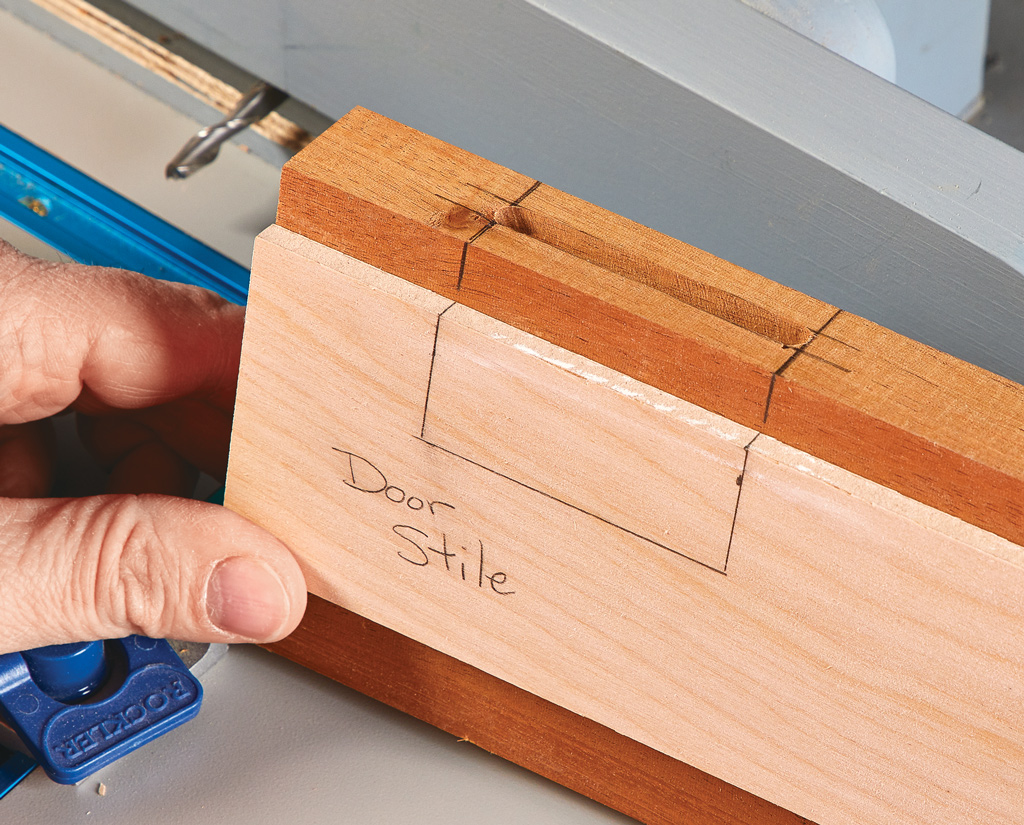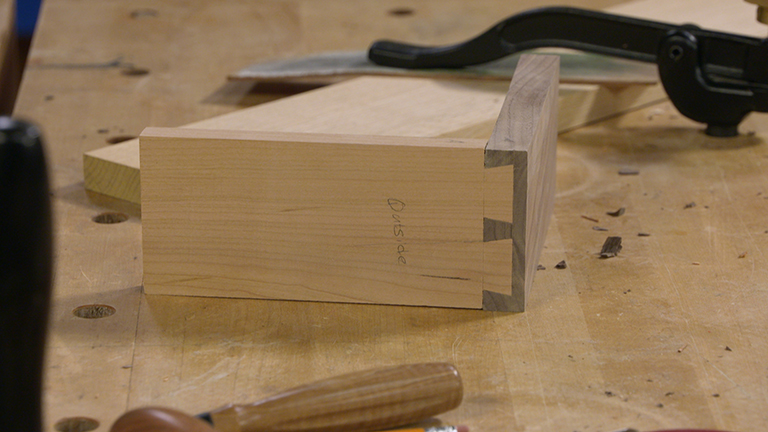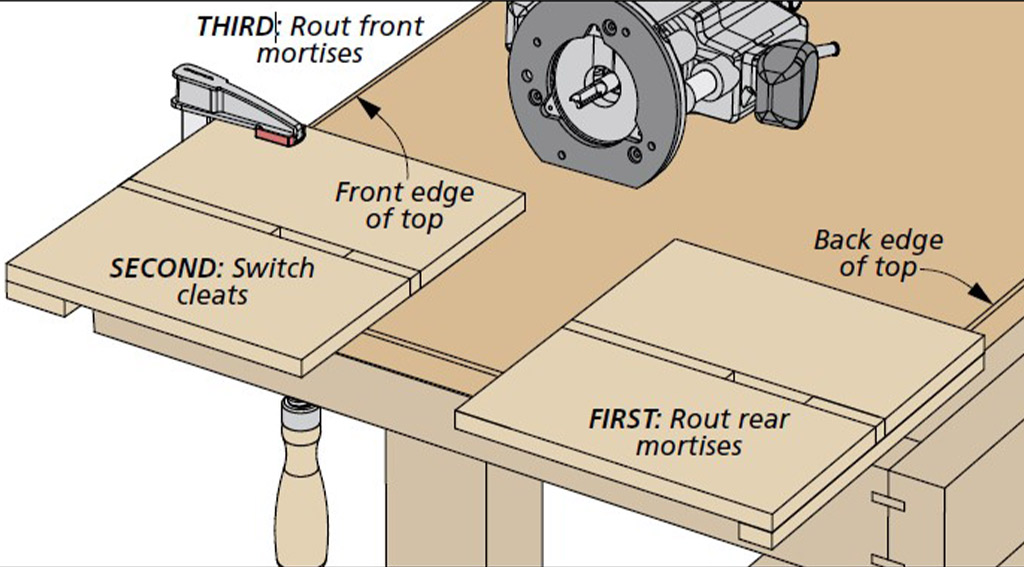
When it comes to designing and building projects, I've never been a woodworking purist. I usually don't worry too much about whether a joinery technique is considered "traditional". I try to focus on a more important goal - finding a good balance between appearance, structural strength, and efficient methods and techniques. In other words, will it get the job done and will it hold up?
This is one reason why I'm not the least bit reluctant to use pocket hole joinery when building a project. It's a quick, accurate, and reliable way to join the parts of a project together.
To reduce it to a basic level, pocket hole joinery is simply assembly using screws. But when you take a closer look, there's a bit more to it than appears on the surface. This level of sophistication and ingenuity is what makes pocket hole joinery such a valuable technique for a range of applications.
THE BASICS. In a nutshell, here's how it works. An angled pilot hole is drilled into the face of one of the mating pieces near the end. The shallow angle of the pilot hole allows the pocket screw to exit the end of the workpiece and enter the edge of the mating piece, pulling them tightly together. A quick glance at the two photos above will give you the idea.
The key to this technique is the ability to drill the angled pocket holes accurately. This is accomplished with the help of a pocket hole jig. All you have to do is set up the jig to drill the pocket holes and then install the screws. The entire operation can be performed in a matter of minutes.
WHERE & WHY? Speed is just one of the benefits of using pocket hole joinery. Another advantage is versatility, as illustrated by the photos below. You can use it to join two pieces of wood in just about any configuration - end to edge, end to face, mitered - you name it. Consequently, the uses of pocket hole joinery in the construction of a project are almost unlimited.
Assembling structural frames and cabinet face frames is a common application.

Another plus is that the bond created is immediate. Although clamps are usually needed for assembly, once the screws are inserted, the clamps can be removed.
I like to take advantage of the self-clamping feature of pocket hole joinery by using it in conjunction with other types of joinery. The photo above shows how pocket screws can substitute for clamps as well as add reinforcement to standard case joints.

WHAT ABOUT STRENGTH? In terms of strength, a pocket hole joint performs quite respectably. Although generally not as strong as a mortise and tenon or a comparable glue joint, a pocket hole joint is the equal of many of the other "quick and easy" joinery techniques such as a biscuit joint, a loose tenon, or a stub tenon and groove.

The only real drawback to pocket hole joinery is that the oval-shaped pocket holes are visible on one face. However, in many instances, the holes can be drilled on an unseen face. Or if not, they can be disguised with special plugs.

THE JIGS. As I mentioned, what makes pocket hole joinery possible is the use of a specialized jig (and bit) to drill the holes. In order for the screw to make the connection, the pocket holes have to be drilled at a precise angle of 15º. It isn't practical to attempt this freehand or even on the drill press. So basically, a pocket hole jig acts as a drilling guide. Depending on the style of jig you use, the workpiece is either clamped in the jig or the jig is clamped to the workpiece. Then, a steel sleeve in the jig keeps the bit on track while drilling the angled hole.
THE BIT. A special stepped drill bit is used along with a jig. As you can see in the main photo at the top of the page, in one operation the bit drills a flat-bottomed counterbore for the head of the screw and short pilot hole for the shank.
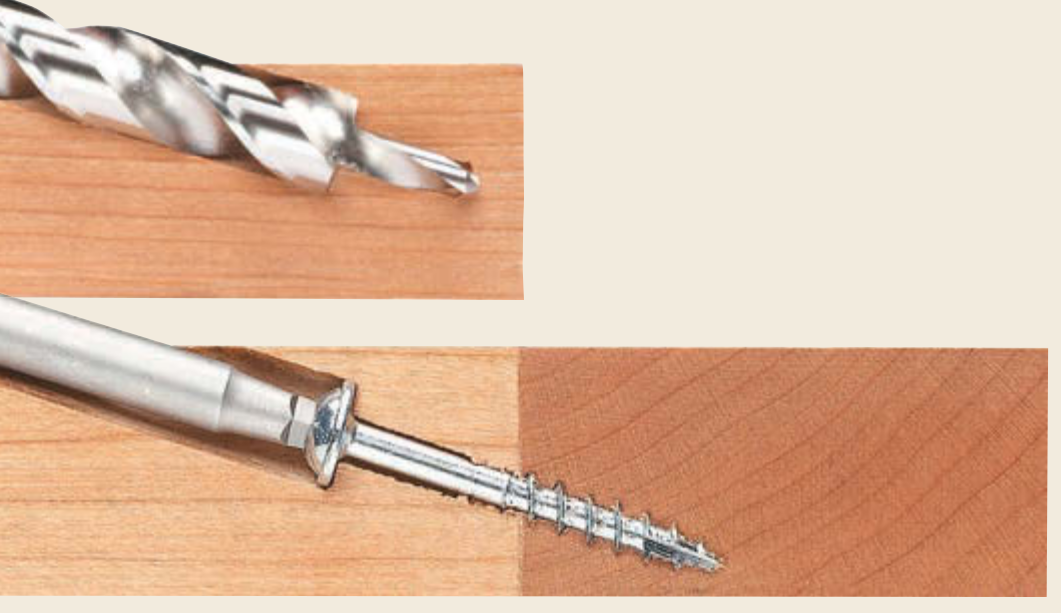
The pocket hole accommodates a pocket screw. These are hardened, self-tapping screws with a wide washerhead and deep threads. Even with fairly shallow penetration, a pocket screw provides a remarkable amount of holding power.
There are a handful of pocket hole jig makers, but one company - Kreg Tool - dominates this field. (A pocket hole jig is often simply referred to as a Kreg jig.) As anyone who's used a Kreg jig will confirm, their products are well-designed, well-manufactured, and consequently, very easy to use. They offer a range of models to suit any need from very basic to full-featured.
Jig Types: Simple to Full-Featured

Kreg makes a pocket-hole jig to fit just about any building need and budget. The basic, entry-level model shown above features just a single guide hole. To position the jig for drilling a pocket hole, you clamp it to the workpiece.
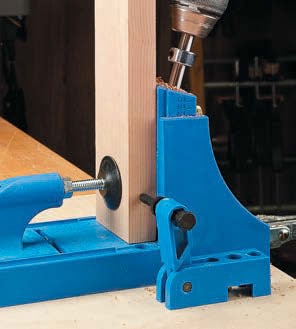
At the other end of the spectrum is this deluxe model. As you can see, this benchtop jig has the advantage of a built-in workpiece clamping system. It also features a three-hole guide block that can be quickly and easily adjusted to accommodate different thicknesses of workpieces.
MAKING A POCKET HOLE JOINT
There are really two operations involved in making a pocket hole joint. First, you drill the pocket holes with the aid of the jig. The second stage is assembling the joint with the pocket screws. Both aspects are pretty straightforward. But each has a few fine points that deserve some discussion.
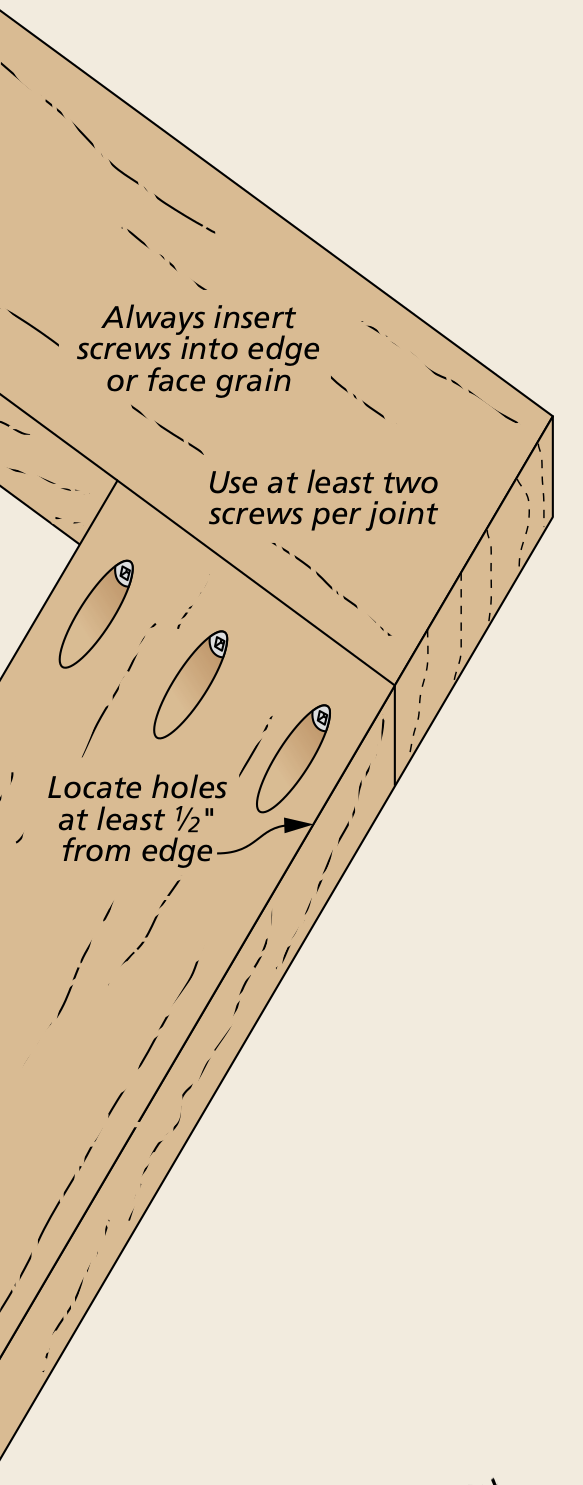
POCKET HOLE LAYOUT. Before you drill the pocket holes, you need to do a little planning. The first thing to think about is the orientation and layout of the holes. The drawing above illustrates a few simple guidelines I like to follow.
Notice that in the drawing (and other examples) the screws exit the end grain of one piece and enter the edge (or face) grain of the mating piece. This orientation of the joint gives the screws a better bite.
Whenever the width of the workpiece permits it, you should install at least two screws across the joint. This will prevent the pieces from twisting out of alignment. This anti-twisting affect will be greatest when the screw holes have a wide separation.
This often means that you want to position the holes near the edges of the workpiece. But don't get too close. To avoid splitting either piece or simply weakening the joint, I locate the holes no closer than 1/2 " from an edge. In workpieces 3" or wider, additional screws spaced evenly between the outer screws will strengthen the joint.

SETTING UP THE JIG. For the best results, a pocket hole should be drilled so that its pilot section stops just short of the surface and the screw will exit near the center of the edge (drawings above). To get this right, you need to set up the jig and the drill bit properly.
In most cases, the stock you're working with will be 3/4 " thick. Many of the jigs are designed around this fact. But when thicker or thinner stock is used, some jigs can be adjusted to drill a hole meeting the same requirements. Essentially, depending on the thickness of the stock, the guide holes in the jig need to repositioned so that the bit enters the face closer to or farther away from the end of the workpiece. This is shown in the two drawings above.
The newer model jigs are easily adjusted to accommodate different stock thicknesses. In other instances, a spacer is inserted in the jig or you simply rely on careful measuring and positioning of the jig.

As well as positioning the holes correctly, you need a way to drill them to the proper depth. This is accomplished with the help of a stop collar on the drill bit, as shown above. You either measure or use a set-up gauge provided with the jig to lock the collar at the correct spot along the bit shank.
Once the setup is completed, drilling the holes is routine. Your only concern here is to be sure to drill them to full depth.
Shop Tip: Assembly Table

The simple assembly table shown above can make the task of installing the pocket screws quicker, easier, and more consistent. The table is made up of a plywood platform with two fences attached at 90º to one another. The fences provide accurate alignment of the workpieces and also offer clamping options. Strips of adhesive-backed sandpaper applied to the platform also help keep the workpieces in place.
ASSEMBLY. One of my favorite aspects of pocket hole joinery is that assembly is generally easy and immediate. Unlike a traditional joint, there is no time wasted waiting for the glue to dry. When inserted properly, the screws play the role of both glue and clamps.
CLAMPS FOR ALIGNMENT. On the other hand, a pocket hole joint isn't self aligning. Until the screws are installed, there's no mechanical connection. So the first goal is to keep the pieces from shifting while the screws are inserted.
The method you use to keep the pieces aligned often depends on the type of joint you're assembling. When assembling a simple frame, you need to keep the surfaces flush as well as in the correct side-to-side position. Temporary clamping of the pieces is an obvious solution.
Sometimes a single clamp applied across the faces of the workpieces will do the job. Locking face clamps are available for this purpose. Or standard clamps can be used. Clamping both pieces firmly to a flat surface will usually keep the pieces aligned.
At times, it's also helpful to apply a clamp across the two pieces to pull them together while the screws are driven. This will prevent the screws from bridging the pieces and causing them to shift out of alignment.
ASSEMBLY AIDS. There are occasions when you need more help than clamps alone can provide. The photo below shows one situation. The mating piece in this T-joint is supported by a "backer" while the screws are installed.
Using a spacer is another way to guarantee consistent results when assembling pocket hole joints.
And if you find yourself relying heavily on pocket hole joinery, you might want to build or purchase a specialized assembly table. It can save you time and make the job go smoother and turn out better.

DRIVE THE SCREWS. The final assembly step involves driving the screws. But first you have to choose the right type for the application. The photo above show the differences.
All pocket screws are self-tapping. And the deep threads tend to pull the screw aggressively into the wood and hold tenaciously. These two features along with a square drive head mean that it doesn't require a lot of force to drive the screw.

A hand drill with a clutch is the ticket. I start with the clutch at a low setting and adjust up until the screw seats snugly.
PLUGS. That leaves only one detail. What if the screw holes are visible?

Once you try pocket hole joinery, I guarantee you'll be hooked. It's a great way to get great results with a minimum amount of work.

How-To: Hide the Pocket Holes
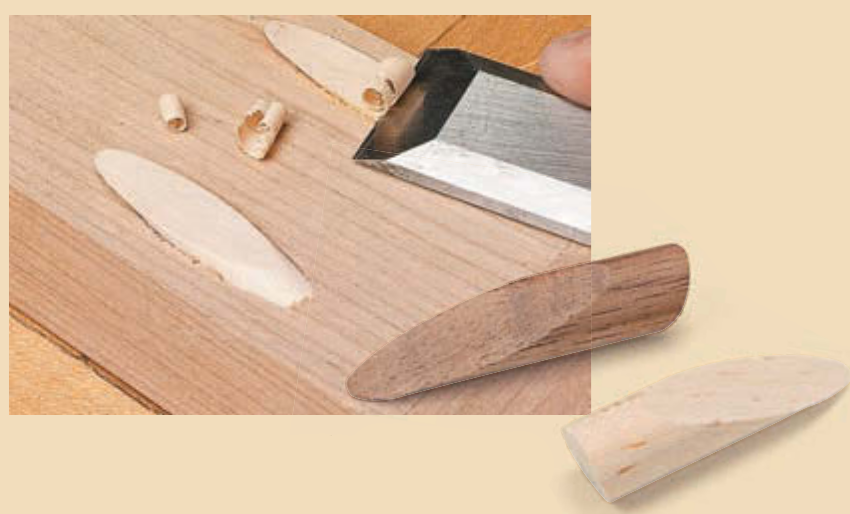
When the project design doesn't allow the pocket holes to be hidden, the next best option is to plug them. Wood plugs can be purchased in a variety of common woods to match the wood in the project. Or you can use a contrasting wood. You simply glue them in place and trim them flush. The easy-to-use snap-in plastic plugs come in five different colors.

Now if you're looking to get started with a simple project using pocket hole joinery, take a look at this Tile-Top Table. It's a great looking outdoor project and can be put together in a few hours.
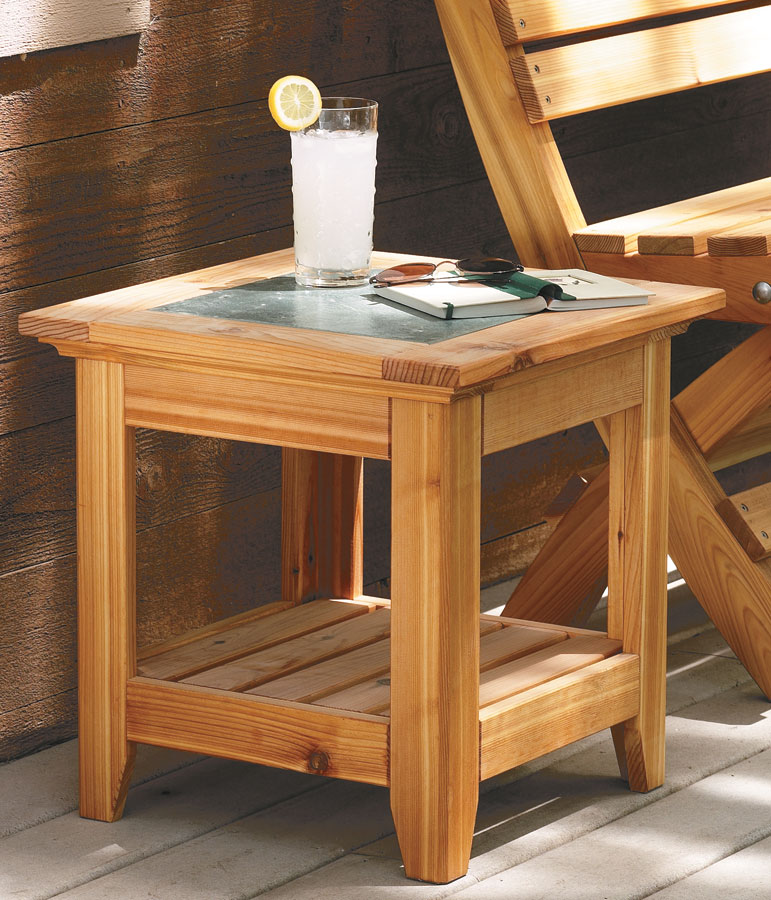
Related: Best Table Saw










